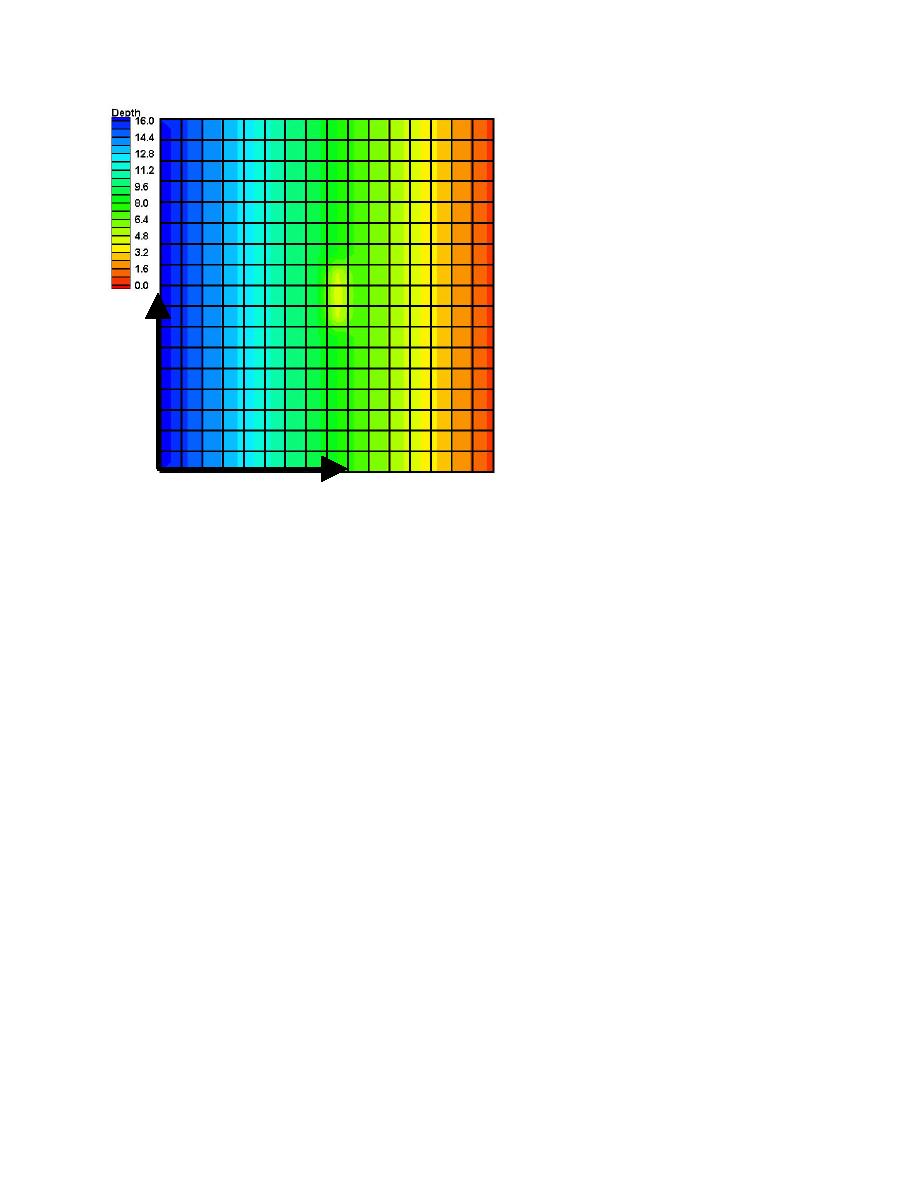
ERDC/CHL CHETN-I-66
June 2002
cell (1,1), the nested grid origin is half a
nested grid cell away at (2112.5 m,
112.5 m)). The orientation of the two
grids does not need to be the same, but if
the directions differ significantly, energy
is lost because of the half-plane definition
of the spectrum (Smith, Sherlock, and
Resio 2001).
Nest File. The nesting file is an output
from coarse grid simulations and input to
fine grid simulations. The file format is
similar to the STWAVE input wave
spectra file (Smith, Sherlock, and Resio
2001). The first line of the file defines the
number of spectral frequencies (NF) and
directions (NA), the number of nesting
points (NEST), and the azimuth of the
coarse grid (from the simulation file).
Figure 11. STWAVE grid origin and orientation
Next, the spectral frequencies are given in
hertz. For each nesting point and time-
step, a header line and the spectral densities are given. The header line contains an integer identifier
(IDD), wind speed in meters/second (U), wind direction relative to the STWAVE coordinate system
in degrees (UDIR), peak spectral frequency in hertz (FM), water elevation correction in meters
relative to the bathymetry datum (DADD), and the x and y coordinates of the nesting point in meters
(X_NEST, Y_NEST). The header line is followed by the energy densities in units of meters
squared/hertz/radian.
GETTING STWAVE: The most recent STWAVE executable (Version 4.0) and sample input and
output files are available on the Coastal Hydraulics Laboratory Web page at:
http://chl.wes.army.mil/research/wave/wavesprg/numeric/wtransformation/stwave.htp
The Web site also provides the STWAVE, Version 3.0, user's manual in PDF format:
http://chl.wes.army.mil/research/wave/wavesprg/numeric/wtransformation/downld/erdc-chl-sr-01-11.pdf
STWAVE Version 4.0 requires some minor changes to the options file from the previous version.
At time of publication, these changes have not yet been implemented in SMS. The parameters (.std)
file can be modified with a text editor outside of SMS, and SMS can be used for all other functions
(grid generation, model runs, and visualization). SMS is being modified to automate and simplify
the nesting process.
9



 Previous Page
Previous Page
